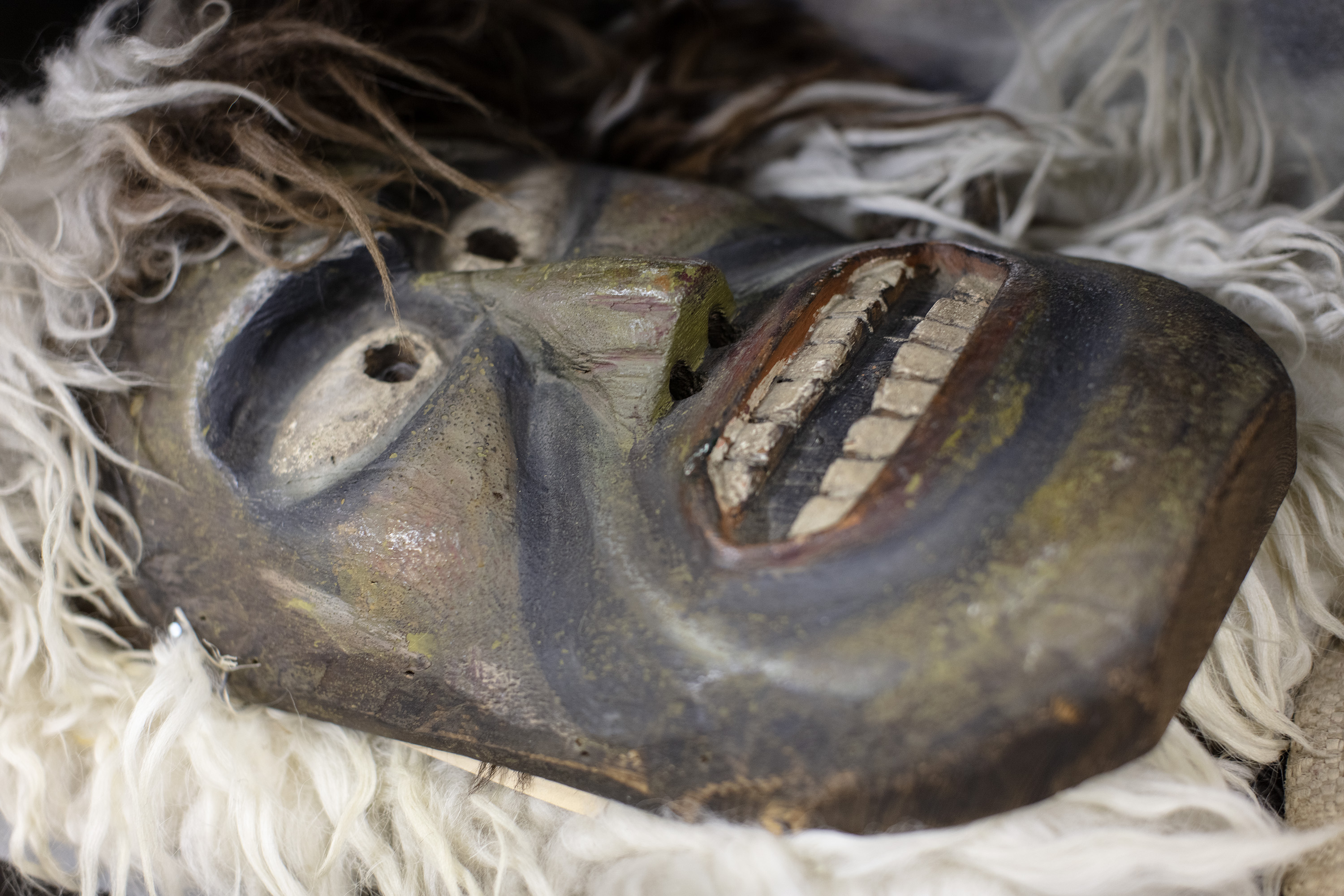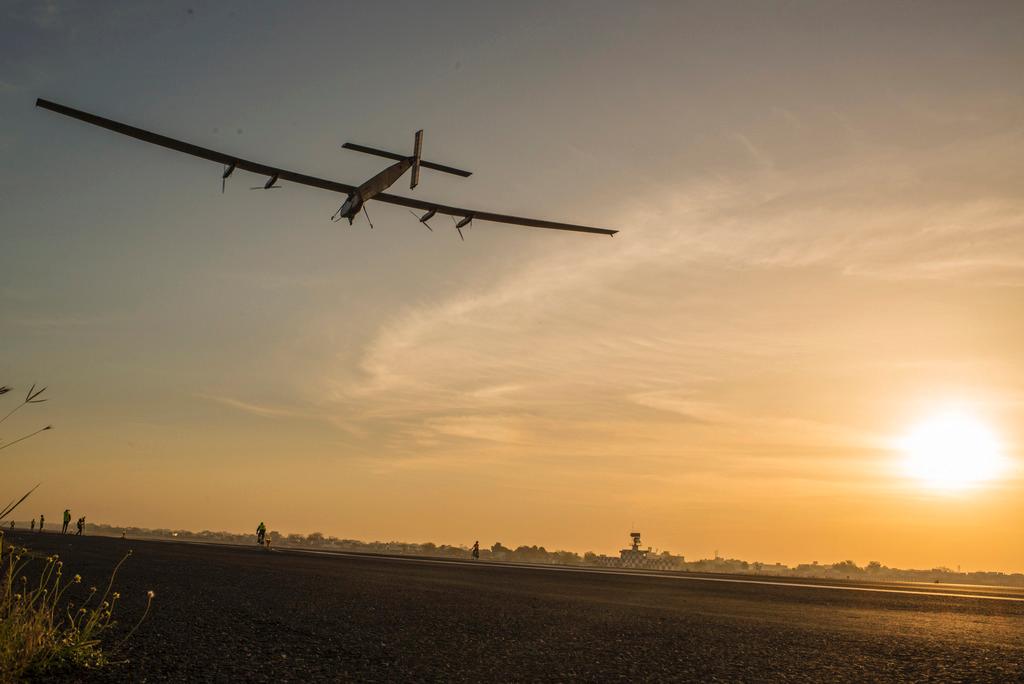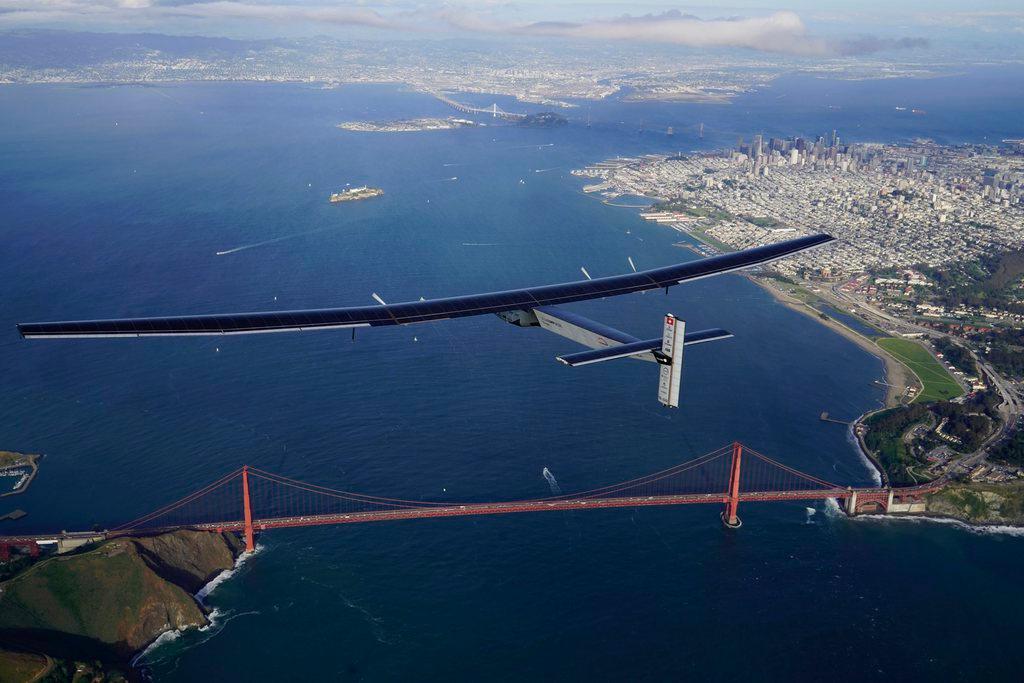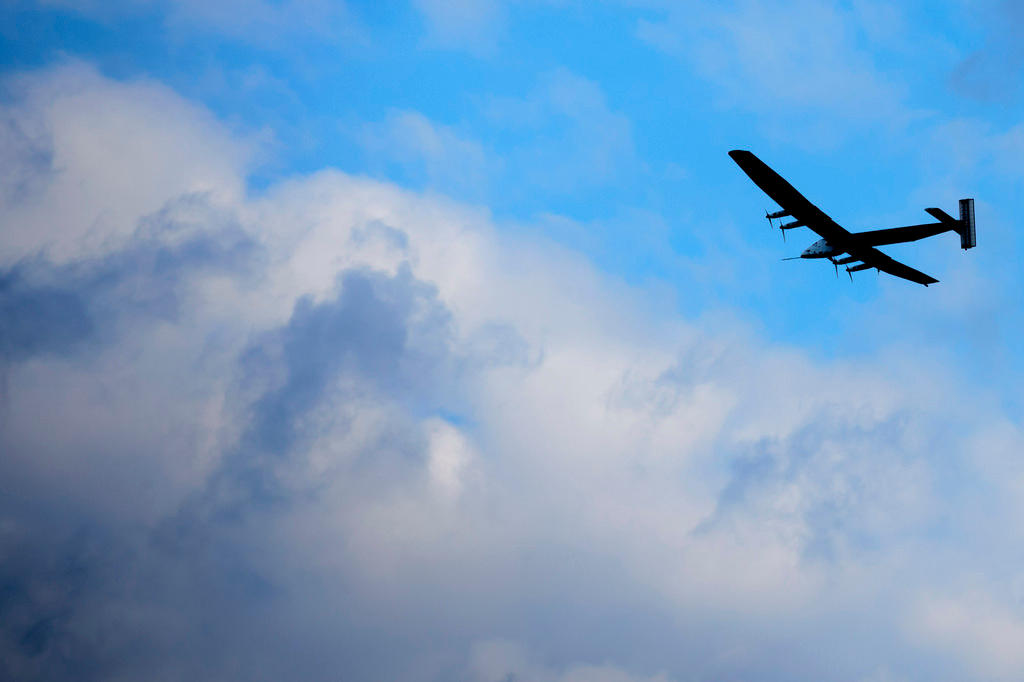Solar Impulse lands in Phoenix

A Swiss solar-powered plane has completed the first leg across the United States from California to Arizona, continuing its journey around the world using only energy from the sun.
The plane left Mountain View, California, at dawn on Monday and landed 16 hours later in Goodyear, a suburb of Phoenix, Arizona at 8.55pm local time.
The 745 mile (1,119 km) flight, at a maximum altitude of 22,000 feet (6,706 metres) and an average speed of 43 mph, was the 10th leg of its round-the-world quest.
Swiss pilot André Borschberg was at the helm of the plane that began a circumnavigation of the globe last year.
Borschberg said the 16-hour trip to Phoenix was “a beautiful flight,” after stepping from the cockpit.
“It was a special flight; not a long flight,” he added.
BREAKING NEWS @andreborschbergExternal link just landed #solarimpulseExternal link in #PhoenixExternal link Arizona! ⚡️ #futureiscleanExternal link pic.twitter.com/VIPQJGF8NpExternal link
— SOLAR IMPULSE (@solarimpulse) May 3, 2016External link
Borschberg was the pilot for the Japan-to-Hawaii trip over the Pacific last July, staying airborne for nearly 118 hours.
That broke the 76-hour world duration record for a non-stop, solo flight set in 2006 by the late American adventurer Steve Fossett in his Virgin Atlantic Global Flyer. It also set new duration and distance records for solar-powered flight.
Borschberg’s Swiss co-pilot, Bertrand Piccard, made the three-day trip from Hawaii to the heart of Silicon Valley, where he landed on April 23.
The Solar Impulse 2’s wings, which stretch wider than those of a Boeing 747, are equipped with 17,000 solar cells that power propellers and charge batteries. The plane runs on stored energy at night.
After Phoenix, the plane will make two more stops in the United States before crossing the Atlantic Ocean to Europe or northern Africa, according to the website documenting the journey.
Where the plane will land after Phoenix remains open. “Some of you have asked for our next destination with Si2. The reason we can’t tell you is because we don’t know yet!” the team wrote on their blogExternal link.
Our mission engineers have been working on a range of flight paths in order to eventually reach New York City, through some small stops along the way. As always with Solar Impulse, there are a range of obstacles that must and will be overcome along the way!”
Spirit of innovation
The two legs to cross the Pacific were the riskiest part of the plane’s travels because of the lack of emergency landing sites.
“We have demonstrated it is feasible to fly many days, many nights, and that the technology works,” said Borschberg, 63, who piloted the plane during a five-day trip from Japan to Hawaii and who kept himself alert by doing yoga and meditation.
The crew was forced to stay in Hawaii for nine months after the plane’s battery system sustained heat damage on its trip from Japan.
The single-seat aircraft began its voyage in March 2015 in Abu Dhabi, the capital of the United Arab Emirates, and has made stops in India, Oman, Myanmar, China and Japan.
The layovers will give the pilots a chance to swap places and engage with local communities along the way so they can explain the project, which is estimated to cost more than $100 million (CHF96 million). It began in 2002 to highlight the importance of renewable energy and the spirit of innovation.

In compliance with the JTI standards
More: SWI swissinfo.ch certified by the Journalism Trust Initiative













You can find an overview of ongoing debates with our journalists here . Please join us!
If you want to start a conversation about a topic raised in this article or want to report factual errors, email us at english@swissinfo.ch.